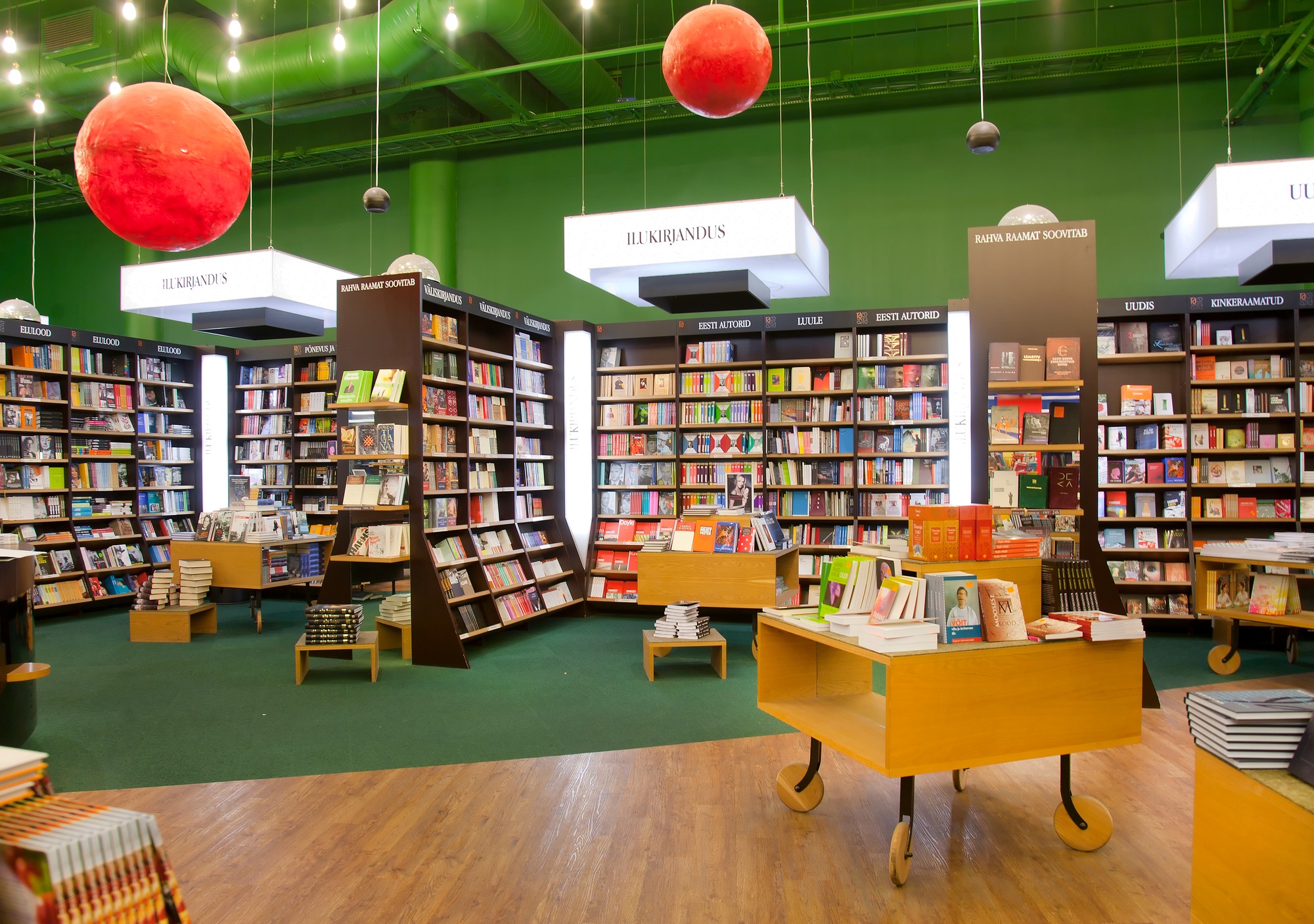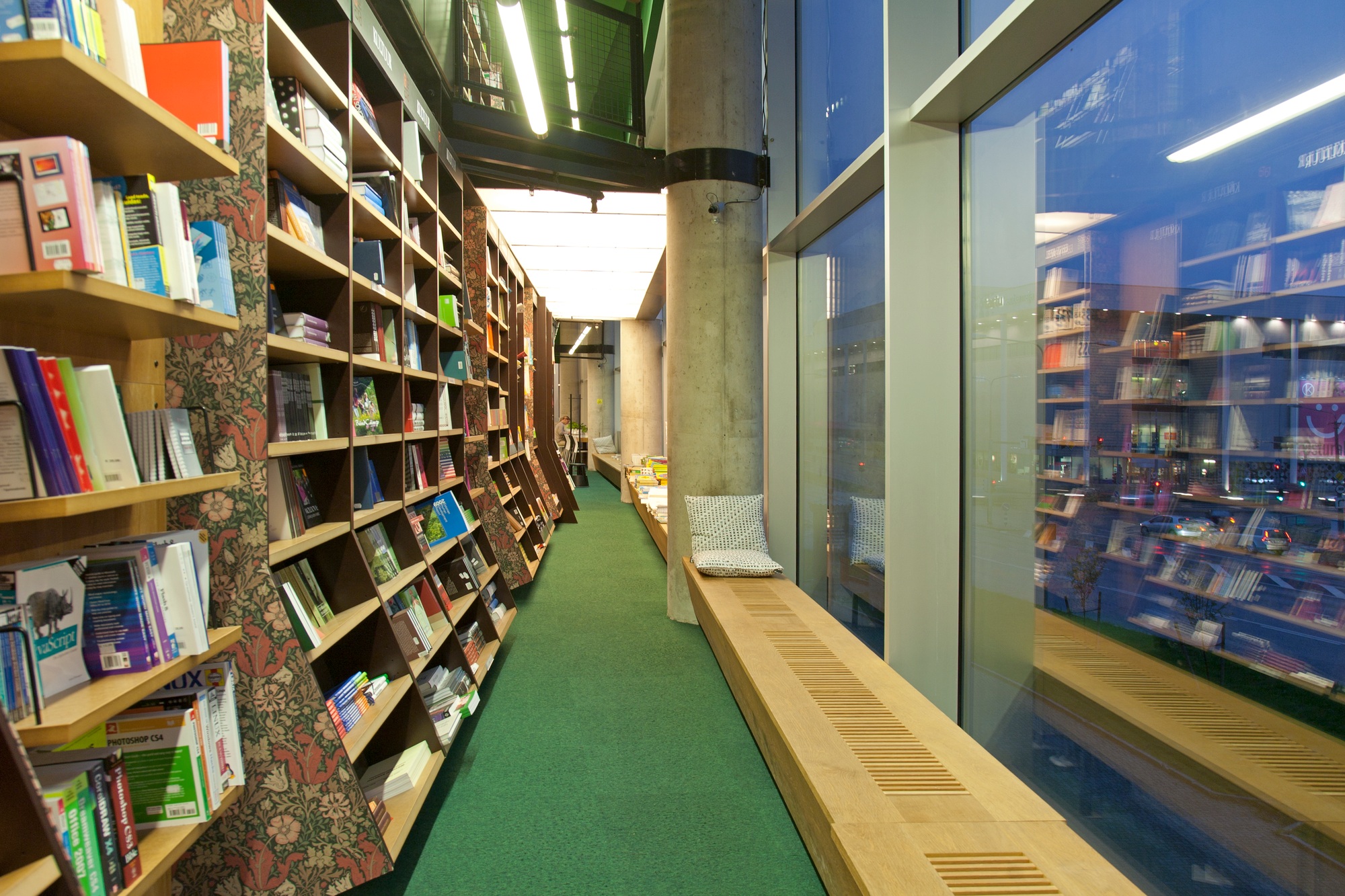Opening a used bookstore is an exhilarating adventure for any book lover! Imagine this: your passion for reading becomes a dynamic community hub, a cozy sanctuary filled with stories and wisdom, all while earning an income.
This guide will lead you through the critical steps to launch your own used bookstore. From developing a strong business plan to choosing the ideal location, we’ll empower you with the insights needed to transform your bookstore dream into a flourishing reality!

Key Takeaways
- Develop a complete business plan that articulates your vision, outlines funding sources, and details operational strategies.
- Choose a reliable supplier for your inventory, considering options from wholesalers to online marketplaces.
- Pick a high-traffic location to increase visibility and draw in more customers.
- Establish a strong online presence and use social media to effectively market and promote your bookstore.
Research and Planning
Starting a used bookstore is an exhilarating adventure, but before you begin, effective research and planning are necessary. Think of this phase as building a sturdy ship to steer the vast ocean of the book trade.
Have you envisioned your bookstore?
Will it be a cozy retreat for book lovers or a spacious venue for author readings and book clubs? Your vision influences every choice, from the location you select to the books you offer.
Next, explore into into thorough market research. This is your treasure map! Visit local libraries, attend library sales, and explore other bookstores. What genres are thriving?
Are there gaps waiting to be filled?
Analyzing your competition helps you identify your niche. For example, if you find a demand for science fiction with few options, that could be your focus.
Creating a detailed business plan is critical. This document acts as your ship’s blueprint, outlining your goals, financial forecasts, and marketing strategies. Include sections on startup costs, inventory management, and supplier relationships. A well-structured plan keeps you organized and attracts potential investors.
When evaluating location, consider foot traffic. A spot on Main Street may attract more customers than a quieter area. Think about your target audience: Are they students searching for bargains or families looking for special editions?
This insight allows you to tailor your offerings effectively.
Don’t underestimate your online presence! In the modern online world, a website and active social media accounts can remarkably increase your visibility. Selling books online expands your reach beyond local customers. This dual strategy—physical store and online platform—can optimize your profit margin.
At last, focus on community engagement. Hosting events like book signings or storytime for kids builds a loyal customer base. By inviting your community into your bookstore, you nurture a sense of belonging that keeps customers coming back.
Thorough research and planning are the foundations of a successful used bookstore. By understanding your market, developing a solid business plan, and engaging with your community, you can turn your dream into a thriving reality.
Conduct Market Research
Conducting market research is akin to being a detective within the sphere of literature. You must gather critical clues about your potential customers and competitors. What genres ignite their passion?
Are they hunting for affordable books or rare editions?
By exploring local library sales, visiting other used bookstores, and scouring yard sales, you can uncover insights that will shape your business plan.
Think of planning a treasure hunt—wouldn’t you want to know the best hiding spots?
Similarly, grasping customer demographics and market trends is critical for attracting and retaining loyal customers. Use surveys, social media, and community engagement to gather data, transforming your used bookstore into a beloved local hub.
Setting Up Your Business

Starting a used bookstore is like Begining on an exhilarating adventure, filled with stories waiting to be told. But where do you begin?
Here’s your step-by-step guide to steer this exciting journey.
1. Conduct Market Research: Knowing your target audience is critical. Who are the book lovers in your community?
What genres ignite their passion?
Think of this as exploring a new world before diving in. Visit local libraries and bookstores to gather insights that will guide your path.
2. Choose the Right Location: Your bookstore’s location is its cover; it must attract readers. Look for spots with high foot traffic, like near schools or cafes. A charming location on Main Street can draw in curious customers excited to explore.
3. Create a Business Plan: A solid business plan is your roadmap. It should outline your marketing strategy, financial planning, and inventory sourcing. Consider it the plot of your story—without it, you risk losing your way.
4. Source Your Inventory: Hunt for used books at yard sales, thrift stores, and library sales. Start with your own collection; each book is a gem waiting for the right reader to find it.
5. Set Up Your Store: Organize your books by genre to create an inviting atmosphere. Comfortable seating and warm lighting can transform your store into a haven for book lovers. A well-organized space is like a gripping narrative—it keeps readers engaged and coming back for more.
6. Develop an Online Presence: In today’s digital age, an online store is necessary. It expands your reach beyond local customers. Use social media to promote your store and connect with your community. Think of it as hosting a virtual book club that everyone wants to join!
7. Market Your Business: Use creative promotions to attract customers. Host author readings or book signings to generate thrill and draw crowds, much like a highly anticipated book launch.
8. Focus on Customer Service: Train your staff to provide exceptional service. Personal recommendations can turn casual visitors into loyal customers. Every interaction is a chance to nurture a devoted reader.
By following these steps, you can transform your passion for books into a thriving used bookstore business. Each step is a chapter in your story, bringing you closer to your dream of becoming a successful bookstore owner.
Register Your Business
To register your business, start by choosing a unique name that captures the essence of your used bookstore. Think of it as naming a ship before it sets sail! Next, select a legal structure—options like a sole proprietorship or an LLC can protect your personal assets. Remember, securing the necessary licenses and an Employer Identification Number (EIN) is critical for tax compliance.
Once registered, open a dedicated bank account for your bookstore business. This keeps your finances organized and distinct, much like arranging your favorite genres on separate shelves. A well-structured business not only boosts your credibility but also attracts repeat customers and lays the groundwork for success!
Find a Location
Finding the ideal location for your used bookstore is like choosing the perfect stage for a mesmerizing performance. You want to be where book lovers naturally gather! Look for areas with high foot traffic, such as lively streets near schools, cafes, or community centers. Visibility and accessibility are key—can potential customers see you from a distance?
Think about your target audience. Are they families, students, or retirees?
Your location should connect with these potential customers. A cozy spot on Main Street invites casual browsers, while a location near a local library can draw in dedicated book club members.
- High Traffic Areas: Choose locations near popular hangouts.
- Community Engagement: Pick spots that align with your audience’s interests.
- Accessibility: Make sure your bookstore is easy for everyone to reach.
A well-chosen location can lift your bookstore from a hidden gem to a busy hub. Are you ready to claim your spot in the bookstore business?
Sourcing and Inventory Management
Launching a used bookstore without a strategy for sourcing and inventory management is like finding your way a dense forest without a map—daunting, right?
These elements are your compass, guiding you through the literary place.
Sourcing is your treasure hunt for the right books at the right prices. Here are some effective methods:
- Yard Sales: Unearth unique secondhand books at local yard sales, often at unbeatable prices.
- Local Libraries: Attend library sales where older inventory is sold to make room for new arrivals.
- Thrift Stores: These shops often have a selection of used books that can yield significant profits.
Once your inventory is established, effective management is necessary. Think of your bookstore as a garden; without care, it can quickly become overgrown. Here are strategies to keep your inventory thriving:
- Inventory Control: Use a tracking system to pinpoint fast-selling books and avoid slow movers, testing your shelves organized.
- Product Categorization: Organize books by genre or theme, making it easier for customers to find what they want and increasing foot traffic.
- Sales Forecasting: Analyze sales data to anticipate trends, allowing you to stock up on popular genres during peak seasons, like science fiction in summer.
Don’t underestimate customer relationship management. Engage with your community through social media, book clubs, or author readings. Building relationships can turn one-time shoppers into repeat customers.
Mastering sourcing and inventory management is critical for your used bookstore business. By nurturing your inventory like a well-tended garden, you’ll attract book lovers and improve your profits!
Find Suppliers
Finding the right suppliers is like discovering hidden treasures in a vast ocean of books. Where can you source used books that truly connect with your customers?
Look at local thrift stores, yard sales, and even your local library during library sales. Each option can show valuable inventory for your used bookstore.
- Estate Sales: These events are often goldmines, overflowing with rare finds for book enthusiasts.
- Online Marketplaces: Platforms like eBay and Craigslist are ideal for uncovering bulk lots of books.
- Book Trade Events: Attend local gatherings to network with other sellers and exchange inventory.
Diversifying your sourcing strategies not only keeps your inventory new but also attracts repeat customers who appreciate a thoughtfully curated selection of secondhand books. Accept the adventure of sourcing—each book has a story waiting to be told!
Curate Your Book Collection
Curating your book collection is like painting a dynamic masterpiece; each book adds a unique shade to your canvas. Start your adventure by diving into yard sales, local libraries, and thrift stores. These hidden gems can engage customers and enrich your inventory with diverse offerings. Are you ready to create a collection that resonates with book lovers and keeps them coming back for more?
- Focus on genres: What does your community crave?Consider popular genres like science fiction and mystery.
- Special editions: Curate rare books that collectors dream of owning.
- Stay organized: Use effective inventory management techniques to keep your collection in order.
By combining thoughtful book sourcing with a welcoming atmosphere, your used bookstore can flourish as a cherished community hub!
Store Setup and Operations

Starting a used bookstore is like discovering a rich source of untold stories. But how do you turn this vision into reality?
Begin with in-depth market research. Who are your ideal customers?
What genres ignite their passion?
Knowing your audience is as critical as finding cheap books at yard sales or thrift stores.
Next, develop a solid business plan. Think of it as your treasure map, detailing your vision, financial forecasts, and marketing tactics. Be specific about your pricing strategy and how you’ll maintain a steady flow of valuable books.
Choosing the right location is like picking the perfect spot for a picnic; it needs to attract foot traffic. A busy area near a local library or college campus can pull in enthusiastic readers. Once you secure your retail space, create an inviting atmosphere. Imagine cozy seating, warm lighting, and neatly arranged shelves beckoning customers to explore.
Effective inventory management relies on smart sourcing. Gather books from library sales, garage sales, and even your own collection. A varied selection not only draws customers in but also keeps them coming back for more.
Make customer service a top priority. Train your staff to be friendly and knowledgeable. Picture walking into a store where the staff knows your favorite authors and can suggest the perfect book. This personal touch can turn initial-time visitors into repeat customers.
In today’s digital age, establishing an online presence is critical. Consider launching an online store where customers can browse and buy books from the comfort of their homes. This expands your reach and fosters engagement through social media platforms.
At last, host events like book signings or author readings. These gatherings build community and draw in more customers. Remember, a thriving bookstore thrives on community engagement and a shared love for literature.
Design Your Store
Designing your used bookstore is akin to crafting a cozy reading nook where every book tells its story. How do you create an atmosphere that draws in book lovers? Start with a thoughtful store layout that encourages exploration. Organize your shelving design by genres, making it easy for customers to find their next favorite read.
Consider incorporating inviting seating for book clubs and author readings. This enhances the shopping experience and builds community connections. A well-organized store acts like a magnet for repeat visits, much like a cherished library. What innovative steps will you take to turn your store into a welcoming haven for all?
Hire and Train Staff
Hiring and training staff is like crafting the perfect recipe; the right mix of skills can create an unforgettable experience for your customers. Start by identifying necessary skills such as customer service, product knowledge, and sales techniques.
Once your team is in place, invest in complete training. Equip them with expertise in inventory management, the book trade, and effective strategies to engage book lovers. This knowledge empowers them to help customers find that perfect used book or recommend a special edition they’ll treasure.
A well-trained staff can turn a casual visitor into a repeat customer. Isn’t it thrilling to imagine your team, driven by a shared passion for books, as the trigger for your used bookstore’s success?
Marketing and Sales

Starting a used bookstore is like opening a treasure chest filled with stories waiting to be explored. But how do you transform your passion for books into a successful business? It all begins with a solid business plan, your necessary roadmap guiding you through market research and securing funding.
Initial, pinpoint your target audience. Who are the book lovers in your community?
Do they crave science fiction, romance, or rare editions?
Understanding your customers allows you to curate a collection that resonates with them. Visit local libraries, attend library sales, and hunt through yard sales and thrift stores to find trending titles.
Next, choose the ideal location for your physical store. Seek out areas with high foot traffic, like near schools or coffee shops. Create an inviting atmosphere—picture cozy chairs, warm lighting, and shelves brimming with good books. This is where readers will want to linger and explore.
Now, let’s tackle inventory management. Source your books strategically from garage sales, estate sales, and online platforms. A diverse inventory not only attracts customers but also keeps them coming back. Organize your collection by genre and author, making it easy for customers to find their next favorite read.
Effective marketing is critical. Use social media platforms to create buzz around your bookstore. Host book clubs, author readings, and special events to engage with your community. These activities can transform your bookstore into a cultural hub, fostering customer loyalty and encouraging repeat visits.
At last, increase your online presence. An online store expands your reach beyond local customers. Offer store credit for patrons who bring in used books, enticing them to return. With a smart pricing strategy and a focus on customer engagement, your used bookstore can thrive in today’s competitive place.
Market Your Business
To effectively market your used bookstore, consider this: How will you enchant book lovers?
Use social media to showcase your unique inventory and promote engaging events like author readings and book clubs. Attract customers with irresistible discounts and create a cozy, welcoming atmosphere. A strategic business plan is necessary for nurturing loyal repeat customers.
- Local Advertising: Distribute eye-catching flyers and post on community boards to connect with nearby readers.
- Online Presence: Launch an online store to extend your reach and sell books beyond your local area.
- Promotional Events: Host exciting events that draw in crowds and create buzz.
Think of your bookstore as a community hub, where each book trade sparks new connections. By sharing your love for literature and engaging actively with your audience, you can build a flourishing small business.
Selling Strategies
Selling Strategies are critical for your used bookstore to thrive. Think of your store as a treasure chest; the more you showcase its gems, the more intrigued customers will be. How can you attract book lovers?
Consider hosting book clubs or author readings. These events create a community vibe, drawing in potential customers.
- Engaging Events: Organize promotional events like book signings to ignite thrill.
- Online Presence: Harness social media to showcase your store and connect with readers.
- Inventory Management: Broaden your selection by sourcing from yard sales, thrift stores, and local libraries.
Combining physical and online selling expands your reach. Remember, it’s not just about selling books; it’s about creating an inviting atmosphere where customers feel at home.
Financial Management

Starting a used bookstore requires sharp financial management, much like curating the perfect collection of books. Think of your finances as the foundation of a house; without a solid base, everything else can crumble. How do you build that strong foundation?
Let’s explore necessary steps.
1. Create a Business Plan: Before you look at selling books, develop a complete business plan. This blueprint should outline your vision, goals, and financial strategies. What are your projected startup costs? How will you manage cash flow? Using a template can help keep your ideas organized.
2. Understand Your Costs: Launching a used bookstore can cost between $8,000 and $50,000, covering rent, inventory, and business licenses. Create a detailed budget that includes these expenses. Will you source books from yard sales, thrift stores, or the local library? Knowing where to find affordable books can remarkably improve your profits.
3. Track Your Inventory: Effective inventory management is critical. Use a simple spreadsheet or specialized software to keep tabs on your books. This helps you identify when to restock and which titles are popular. Are your special editions in high demand?
This data can refine your pricing strategy and sales forecasts.
4. Develop a Marketing Strategy: Attracting customers to your independent bookstore requires a strong marketing approach. Use social media to promote events like book signings or author readings. Engaging with your community through book clubs can cultivate a loyal customer base.
5. Monitor Profit Margins: Profit margins in the book industry can be slim—often about half of what you might expect. Regularly evaluate your sales to make sure your pricing remains competitive. Are you charging more than your competitors?
If not, it may be time to reassess your strategy.
Managing finances goes beyond tracking numbers; it’s about nurturing a used bookstore that reflects your passion for books. With strategic planning and careful attention to detail, you can turn your dream into a thriving reality. Remember, every successful bookstore starts with a solid financial foundation!
Manage Your Finances
Managing your finances is like steering a ship through stormy seas. A strong business plan is your compass, guiding you through the challenges of startup costs, inventory management, and cash flow. Have you analyzed your profit margins? This knowledge helps you identify which used books fly off the shelves and which gather dust. Think of your bookstore as a garden; with strategic budgeting, you can nurture growth and flourish!
- Set a budget: Outline your monthly expenses, including rent and utilities.
- Track sales: Use a simple spreadsheet to monitor your best-selling titles.
- Plan for emergencies: Set aside a portion of your earnings for unexpected costs.
How will you attract customers? Harness the power of social media to promote special discounts and book signings. Just as a lighthouse guides ships to safety, a strong marketing strategy can illuminate the way to your independent bookstore.
Launch and Growth

Starting a used bookstore is like planting a seed in a garden of stories. With care, it can flourish into a dynamic business that draws book lovers from all walks of life. But how do you launch and nurture this dream?
Here’s your roadmap.
Begin with market research. Think of it as scouting the terrain before setting up camp. Who are your target customers? Are they students hunting for affordable textbooks or adults seeking rare special editions? Knowing your audience helps you tailor your inventory and marketing strategies effectively.
Next, select the right location. A spot with high foot traffic—like near a local library or on Main Street—can attract curious readers. Envision your store as a cozy nook where people escape into different genres. An inviting atmosphere is necessary!
After securing your location, craft a business plan. This blueprint should outline everything from financial projections to your inventory management strategy. Factor in expenses like rent, sourcing books from yard sales, thrift stores, and estate sales, and hiring staff.
Now, consider stocking your shelves. Start with your own collection or buy books at library sales and garage sales. Aim for a mix of popular titles and hidden gems to keep customers coming back. Pricing is key—set competitive yet profitable prices, usually around half the retail price for used books.
Let’s talk about your online presence. In today’s digital age, a website and active social media accounts are critical. Use these platforms to promote book signings, author readings, and book clubs. Engage with your community and offer special discounts to build customer loyalty.
At last, prioritize your customers. Create a welcoming environment where they feel valued. Train your staff to provide personalized book recommendations and nurture a sense of community. Remember, a successful bookstore isn’t just about selling books; it’s about creating a space where stories come alive.
With passion and dedication, your used bookstore can become a cherished hub for readers, thriving at the heart of your community.
Launch Your Business
Ready to launch your used bookstore? Begin with thorough market research to understand your target customers and competitors. Think of it as planting seeds; knowing your soil ensures your garden thrives!
Next, choose the ideal location. A high-foot traffic area is like a magnet for book lovers. Seek spots near thrift stores or local libraries. Once you secure a location, create an inviting atmosphere where customers feel at home.
Now, build a strong online presence. Use social media to engage customers and showcase your unique inventory. Selling books online broadens your reach, just as sunlight nourishes a growing plant.
At last, craft a detailed business plan. Include financial projections, inventory management, and a marketing strategy. This plan is your roadmap, guiding you through every twist and turn on your journey as a bookstore owner.
Stay Competitive
To stay competitive in the used bookstore business, think of your shop as a dynamic garden. Just as a garden needs nurturing, your bookstore requires strategy and attention. Are you reaching potential customers through social media? Are your prices attractive enough for book lovers? By offering special discounts and hosting book clubs, you create a lively community that keeps customers coming back.
- Engage: Use social media platforms to promote events like author readings and book signings.
- Stock Smart: Curate a diverse selection of used books—from science fiction to rare editions—to attract different readers.
- Online Presence: Create an online store to reach customers who prefer buying books online.
By viewing your bookstore as a living entity, you can adapt and flourish, ensuring its long-term success.
Summing up
Launching a used bookstore is an exhilarating journey that lets you share your love for literature while building a lively community. Picture a cozy nook transformed into a sanctuary for book enthusiasts, where each shelf whispers tales of adventure. Success hinges on careful planning—select a prime location and forge genuine connections with your customers. With passion and commitment, your bookstore can thrive like a flourishing garden. So, gather your ideas, develop a strong plan, and prepare yourself to open your doors to fellow bibliophiles!
Frequently Asked Questions
How to set up a next hand bookstore?
Research your market, find a cozy location, curate your inventory, and create an inviting atmosphere to attract book lovers.
How much does it cost to start a used bookstore?
Starting a used bookstore can cost between $10,000 to $50,000, depending on location, inventory, and setup. Plan wisely!
Can you make money with a used book store?
Yes, a used bookstore can be profitable with smart inventory choices, online sales, and community engagement. Passion pays!
What are the initial steps to start a used bookstore?
Research the market, create a business plan, find a location, organize inventory, and develop an online presence.



